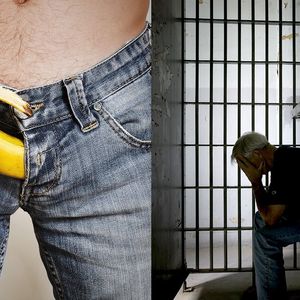I have a question for my fellow teachers: What do you do when you've gotta go?
Do you just, well, go? Go in, do what you have to do, and leave? Or have you ever had to think "Will I get hassled for walking into this bathroom? Will there be a stall? Will someone call the police?" These are some of the questions transgender students have to ask themselves when thinking about relieving themselves -- and questions that shouldn't have to preoccupy their minds in a safe learning environment.
Two higher profile cases have recently emerged that illustrate this issue perfectly. In Maine, one trans student, Nicole Maines, pursued a lawsuit against her school district for five years, starting in elementary school. She argued that she had the right to acess the girls' restroom, which she had been using uneventfully until a peer's father got involved and complained.
Maines argued that her civil rights had been violated under Title IX, the law developed to ensure equity of girls and boys in any educational program that has federal funding. The directive includes providing equal access to public accommodations, including locker rooms, changing facilities, and bathrooms. This month Maines received a $75,000 settlement from Maine's Supreme Court.
This week in Virginia, a trans male student, Gavin Grimm, is now having the tables turned on him in a way similar to what Maines experienced. After quietly using the boys' bathroom since October with the principal's permission, he is now barred. The school board held a vote this month and decided 6-1 that this student cannot use his "preferred" bathroom. Grimm now finds himself among the estimated 52.9 percent of trans students who are required to use the bathroom of their legal sex.
After using the boys' facilities since October, where is this 10th-grader supposed to go? Does the school board now trump an administrator's decision of what's best for students?
Students in K-12 education who identify as trans often face several additional battles each day. For example, they may have to continually ask peers and adults to use their preferred name and pronouns, not have the opportunity to play a sport on a team with the gender they identify with, have no access to books with people who they can relate to, and be bullied by peers and teachers.
Here's the common factor that keeps these battles raging: Most schools aren't informed or educating themselves on how to best support trans individuals. Because of this, trans students deal with discrimination or feelings of unworthiness.
This strikes me as profoundly counter to the mission of educational institutions. So my question continues to be: Can't we just all go about our business?
As an educator and advocate for students, I'm sad, hurt, and disgusted with the fact that we aren't past this yet. As teachers, we play a role in many aspects of students' lives. We must push past the idea that content and academics are the sole purpose of our profession. We help students develop the skills to create better, more equal worlds for themselves and others. As Maria Montessori, creator of the Montessori philosophy of education, has said:
"An education capable of saving humanity is no small undertaking; it involves the spiritual development of man, the enhancement of his value as an individual, and the preparation of young people to understand the times in which they live."
The times we live in include trans students asking to use the restroom that accords with their gender identity. As teachers, we must work with this so that we're best equipped to teach our students to live in the real world. So this is what I have to say to other teachers: Step up to your duty (no pun intended) to create truly global citizens who have empathy and respect for others.
This means asking yourself: Do trans students need another thing to worry about while trying to fill the very basic need of using the restroom? By allowing students to use a bathroom where they feel most comfortable, these kids can just be kids. Knowing that they can use the bathroom like everyone else can relieve a lot of the stress many trans students carry around on a daily basis.
After all, it's a well-known fact that when a student feels connected to and respected by a community, they are more likely to engage and thrive. We became educators to help facilitate this, right?
I'm aware that some may argue: Trans kids in the bathroom will make other students feel uncomfortable or may even be dangerous. In response, I'd say consider research conducted by Gay and Lesbian Advocates and Defenders, based on observing legal protections of transgender students in Massachusetts. Their study showed that most people don't have problems with transgender people using their preferred bathroom. It's not a big deal unless we make it a big deal.
Further, when someone did have a problem with a trans student using a bathroom not aligned with their assigned sex, GLAD recommended providing proper staff training and education rather than removing the trans child. In other words: The fix was with the adults, not the students. GLAD found that after trainings, these misconceptions were usually resolved.
Others, still, may argue that having trans kids use single-occupancy restrooms could solve things. But in response, I have to ask: Do you want to feel like someone who gets treated differently? Now just imagine that feeling in your students. I know that I personally wouldn't want to be the kid who had to walk to a separate part of the building to access the only single-stall bathroom. Moreover, a nationwide climate study on trans students has found that when trans students have to deal with this feeling day after day, they often skip school and become more and more disengaged over time.
Knowing all this, I can only conclude that if someone identifies as male and feels comfortable using the boys' bathroom they should be able to. The same goes for girls in girls' bathrooms. Kids understand the world through their experiences. Not everyone will agree with everything, but we do need to demonstrate kindness and respect toward everyone.
My recommendations, then, are to begin educating yourself and talking to other educators about the need to be informed about trans and LGBQ youth. Read a book. Nick Teich's Trans 101: A Simple Guide to a Complex Issue is a great background piece. Attend a Gay, Lesbian, and Straight Education Network training for comprehensive introductions to creating schools that welcome all students. Create a diverse classroom library. Consider subscribing to Bee Me Bookshelf or Flamingo Rampant. See also the individuals and organizations leading the charge as outlined on my blog, Evolving Gender.
A. WILLIAM WALKER is a special education teacher and community activist. He holds a B.S. in elementary education and is completing a M.Ed. in special education. Magnus Books will release his first book, a coedited anthology on transmasculine experiences, in spring 2015. In January he will begin a two-year term serving on a state commission on LGBTQ youth. See more of his writing at www.evolvinggender.com.


















































































